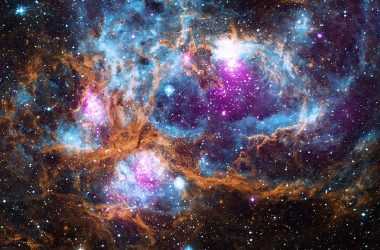The James Webb Space Telescope (JWST) has had a momentous first year of research, producing a series of extraordinary images that have pushed the boundaries of astronomy. Here, we present eight of the most captivating and significant images from JWST’s inaugural year, giving us a glimpse of the groundbreaking discoveries that lie ahead.
Image 1: Deep Field
The “Webb’s First Deep Field” image captured by JWST revealed the deepest view of the cosmos ever recorded. This image uncovered never-before-seen galaxies, potentially the most distant ever observed, providing invaluable insights into the early universe.
Image 2: Pillars of Creation
JWST revisited the iconic Pillars of Creation, previously photographed by the Hubble Space Telescope, and unveiled even more intricate details of these towering structures of dust and gas. This image shed light on the fascinating process of star formation.
Image 3: Jupiter
While exploring the vast reaches of the universe, JWST also captured a stunning image of Jupiter, showcasing its shimmering auroras, delicate rings, and the presence of its moons. This image offers an opportunity to deepen our understanding of the inner workings of giant planets.
Image 4: Cartwheel Galaxy
The Cartwheel galaxy, with its captivating ring structures resulting from a celestial collision, was captured by JWST with unparalleled clarity. This image allowed researchers to uncover unexpected bursts of star formation, providing insights into the aftermath of galactic collisions.
Image 5: WR 124
WR 124, a star on the verge of a supernova, was brilliantly captured by JWST. This image showcases the star shedding its outer layers, leading to the formation of a striking cloud. In the near future, this star will explode, transforming the scene into a celestial cataclysm.
Image 6: Phantom Galaxy
The ethereal spiral captured by JWST is known as the Phantom galaxy or M74. JWST’s unique infrared capabilities allowed for the revelation of intricate details within its spiral arms, aiding astronomers in understanding star formation and galaxy evolution.
Image 7: WR 140
JWST captured the awe-inspiring image of WR 140, a star system featuring a Wolf-Rayet star and a supergiant star. The rings surrounding these stars, composed of carbon-rich dust, provide valuable evidence of dust production over multiple orbits. This dust plays a crucial role in the distribution of carbon in the universe.
Image 8: Southern Ring Nebula
The Southern Ring Nebula, shaped by a complex dance of at least four stars, was the subject of two fascinating images captured by JWST. These images revealed the intricate strands and arches of hot gas created by the interactions between the central star and the surrounding stars. This observation expanded our knowledge of the nebula, uncovering additional stars within its structure.
Topics
- Astronomy
- James Webb Space Telescope








